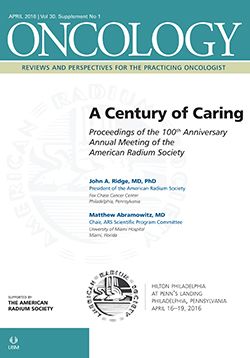(P004) A Comparison of Postmastectomy Radiation Therapy (PMRT) With Protons vs Photons
Protons for postmastectomy radiation therapy, particularly in cases of challenging anatomy, result in decreased dose to normal structures compared with photon plans, with acceptable acute toxicity. Dose escalation after double-scattered proton should be used with caution to avoid skin toxicity.
Jennifer Vogel, MD, Lilie Lin, MD, Katie Shillington, CMD, Geraldine Shammo, CMD, Maura Kirk, MS, Stefan Both, PhD, Gary Freedman, MD; University of Pennsylvania
PURPOSE: PMRT improves survival of patients with high-risk breast cancer but may cause cardiac and pulmonary morbidity. We evaluated acute toxicity from proton beam postmastectomy radiation therapy (PMRT) in patients with reconstruction and/or challenging anatomy, and dosimetrically compared proton and photon plans.â©
METHODS: Patients treated with double-scattered proton (DS-PT) PMRT were enrolled in an institutional review board (IRB)-approved registry. Three-dimensional (3D) conformal photon ± electron or intensity-modulated radiation therapy (IMRT) (Rapid Arc) comparison plans were generated for each patient, depending on which best suited patient anatomy. Wilcoxon paired t-test was used for statistical comparisons. Toxicity was assessed by Common Terminology Criteria for Adverse Events version 4.03.
RESULTS: Nine women with 10 breast cancers were evaluated. Four patients had left-sided cancer, two had prior radiation, and eight had permanent reconstruction. Eight were treated to supraclavicular nodes, three to axillary nodes, and three to internal mammary nodes. Median dose was 50.4 Gy (range: 49.5–60.4 Gy).
A total of 7 3D conformal plans and 3 IMRT plans were compared with the 10 proton plans. There were no differences in planning target volume (PTV) coverage (P ≥ .07). Proton median heart mean dose and V5 were 71 cGy and 2.4%, respectively, compared with 286 cGy (P = .005) and 7.6% (P = .007) for photons. Median mean left ventricle dose was 0.3 cGy compared with 285.2 cGy (P = .005), respectively. Proton median ipsilateral lung mean dose, V5, and V20 were 888 cGy, 30%, and 19% compared with 1,905 cGy (P = .007), 64% (P = .005), and 37% (P = .007) for photons.
Median follow-up was 10.4 months. All acute toxicity was grade ≤ 2. At 48 weeks, there was one grade 4 skin toxicity after a boost to 60.4 Gy. There have been no local recurrences.
CONCLUSIONS: Protons for PMRT, particularly in cases of challenging anatomy, result in decreased dose to normal structures compared with photon plans, with acceptable acute toxicity. Dose escalation after DS-PT should be used with caution to avoid skin toxicity.
Proceedings of the 98th Annual Meeting of the American Radium Society - americanradiumsociety.org
